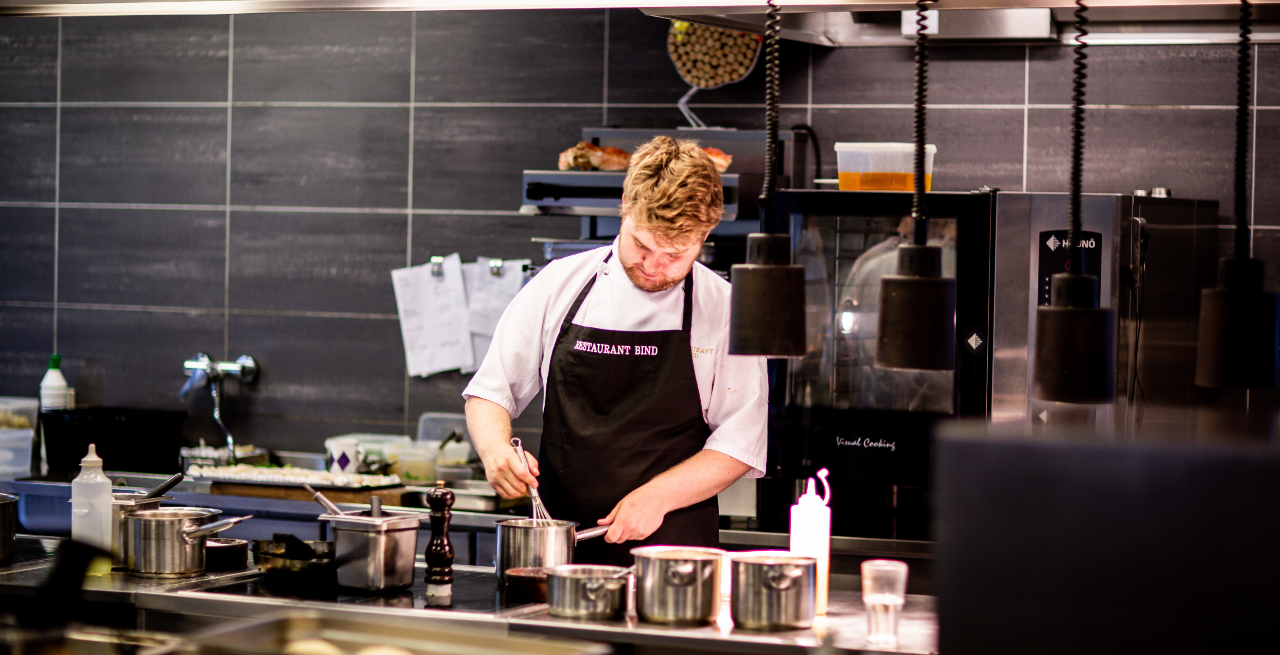Pros and Cons of Open Kitchens in the Restaurant Industry
5 Min Read By Aditi Basu
The open kitchen concept has become one of the biggest trends in the restaurant industry. When people walk into a restaurant, food transparency is what matters the most. An open kitchen makes the understanding of the whole food production process really simple. However, it is still a matter of discussion whether an open kitchen is good from an operational standpoint or not. Talking realistically, a few restaurants like to be 100% transparent about their processes with the public.
Restaurants have opted for various technologies to make the whole concept of open kitchens absolutely comfortable for the diners. One such technological adoption is the commercial kitchen ventilation system. It includes both air exhausts as well as replacement air facilities within the cooking area.
As consumers increasingly become health conscious, their interest in clean label foods is rising significantly, especially plant-based alternatives. Naturally, when they dine out, they are interested in knowing whether the food served is prepared using animal or cruelty free ingredients, further broadening prospects for open kitches. In this blog, we will discuss the pros and cons of open kitchens in the restaurant industry and how the restaurants are offering the best possible experience to their diners.
Pros of Open Kitchen
Cooking Skills Are Cool
People love watching how the food they are going to eat is being cooked. The cooking skills of a chef tells a lot about the food being cooked by him. An open kitchen helps a chef in demonstrating his or her cooking skills to the diners who love watching cooking. This way, a chef does not only sell a winning product but also gains popularity among the diners. Using an open kitchen delivers visual entertainment for the diners, offering them an experience to remember.
In addition to this, when the kitchen is an open one, the diners can actually view everything being cooked; making them curious. This may land the restaurant in a profitable situation considering the fact that the diners could take interest in what others are ordering; landing up ordering the same or even more for themselves.
Furthermore, better experience leads to increased profitability. Therefore, there is a direct link between open kitchen restaurants and the profitability of a restaurant.
Viewing Helps Develop Trust
An open kitchen was launched with the key motive to gain diners' trust. Looking at the past scenarios, restaurants customers have witnessed the food just appear from behind the closed doors. This is still prevalent in the major parts of the world. However, for maximum transparency, restaurants at all levels are wanting to be transparent with the diners in order to maintain the long term trust and customer base.
Furthermore, the care and attention that chefs take while preparing the food gives a satisfaction to the diners that there's no chance of anything going wrong with the food. A study suggests that in order to provide for a safer food consumption environment, kitchen design and layout are being considered more often, as evidenced by the growth of professions such as foodservice consultants, who work with foodservice equipment dealers to plan the physical layout of commercial kitchens.
Creates Motivation for Chefs to Cook Better
According to a study, closed kitchens were observed to be an isolated world, hidden from society and filled with aggression. This seclusion impacted the mood and attitudes of chefs before they entered work. However, in contrast, the attitudes towards going to work in the open kitchen were more positive due to the wider contact with people and the physical location giving chefs a greater feeling of light and space.
It is true that when chefs see the diners enjoy the food served to them, they find utmost motivation to cook even better. This literally develops a feeling of happiness along with a greater job satisfaction. Furthermore, instant feedback can inspire chefs to raise their game.
Space and Money Savers
The open kitchen concept in restaurants is not only about the chefs and diners and their point of satisfaction and motivation. An open kitchen saves space and money for the restaurant owners. Separate and closed kitchen requires more space; therefore, leading to the generation of more rent, power and maintenance costs. The concept of open kitchens has eliminated the extra costs incurred by the restaurants and increased the profits. This lets the restaurants maintain both- space and money along with the customer satisfaction.
Cons of Open Kitchen
Too Noisy
In a restaurant’s kitchen, you come across noises varying from the noise of running water to noise of dishwashing. There’s no question that restaurants have grown louder over the past few decades. The combination of the sound of the oven, dishwasher, coffee percolator and more with the noise of music and diners conversing with each other makes the concept of an open kitchen a little hard to accept from an operational standpoint.
To help cope with the noise, restaurant owners are opting for different ways— like working with engineers and renovating the restaurants. This makes the overall noise reduction process really expensive.
Prevents Temperature Control
Restaurant kitchens trap heat easily. In an open kitchen, while cooking is underway, the temperature of both the kitchen and the room increases. This can bury the comfort of the staff and diners. The best way to combat this heat is the installation of systems that offer ventilation, circulation and hydration. Furthermore, the exposed kitchen needs frequent checks on grease, dust, filters and vacuuming ducts, as needed. This creates additional expenses and an added cost in the energy bills.
Lack of Kitchen Space
Even though an open kitchen saves space and money, it can create problems at the backend. Lesser space means a lesser number of cabinets, wall art, storage shelves, electric outlets and more. It gets very difficult to operate in an organized manner in an open kitchen with the least amount of space.
When the operational space is less, the chances of the kitchen getting messy during the peak hours are very high. This might ruin the overall experience for the diners once and for all.
Privacy Concerns
As mentioned earlier, chefs may get motivated and feel happy upon seeing the diners enjoying the food. But not all the chefs are so extroverted. Some chefs work to the best of their abilities when they are not being seen by anyone. Even though the kitchen staff might always try to keep their diners happy and entertained, they might end up being mentally tired and stressed considering the fact that they are always being watched. It is not ideal for the staff to always be this exposed.
Could Possibly Ruin Diner’s Experience
As much as the diners would love to experience the open kitchen, there might be some issues that may arise and ruin the whole experience for them. For instance, not all the aromas that come from the kitchen are pleasant. Some are really bad for an average human being owing to the fact that some people are allergic to specific foods and their smell. In an open kitchen, diners have no control over the aroma that might end up in the dining area.
Realistically and figuratively, open kitchens might not be for everyone. For the newly launched restaurants, the open kitchens plan is a great way to attract customers by offering them an exposure of what happens inside the kitchen alongside the appearance and conduct of the staff.
But at the same point of time, it is not fair to expect the kitchen staff to prove their ways of operating in a kitchen. In other words, it should really depend on the vision of the outlet owner to decide on whether the restaurant should operate in an open plan kitchen or a closed one. Lastly, despite the difficulties, an open kitchen can heighten the guest dining experience along with an emphasis on its food safety procedures and authentic preparation.


